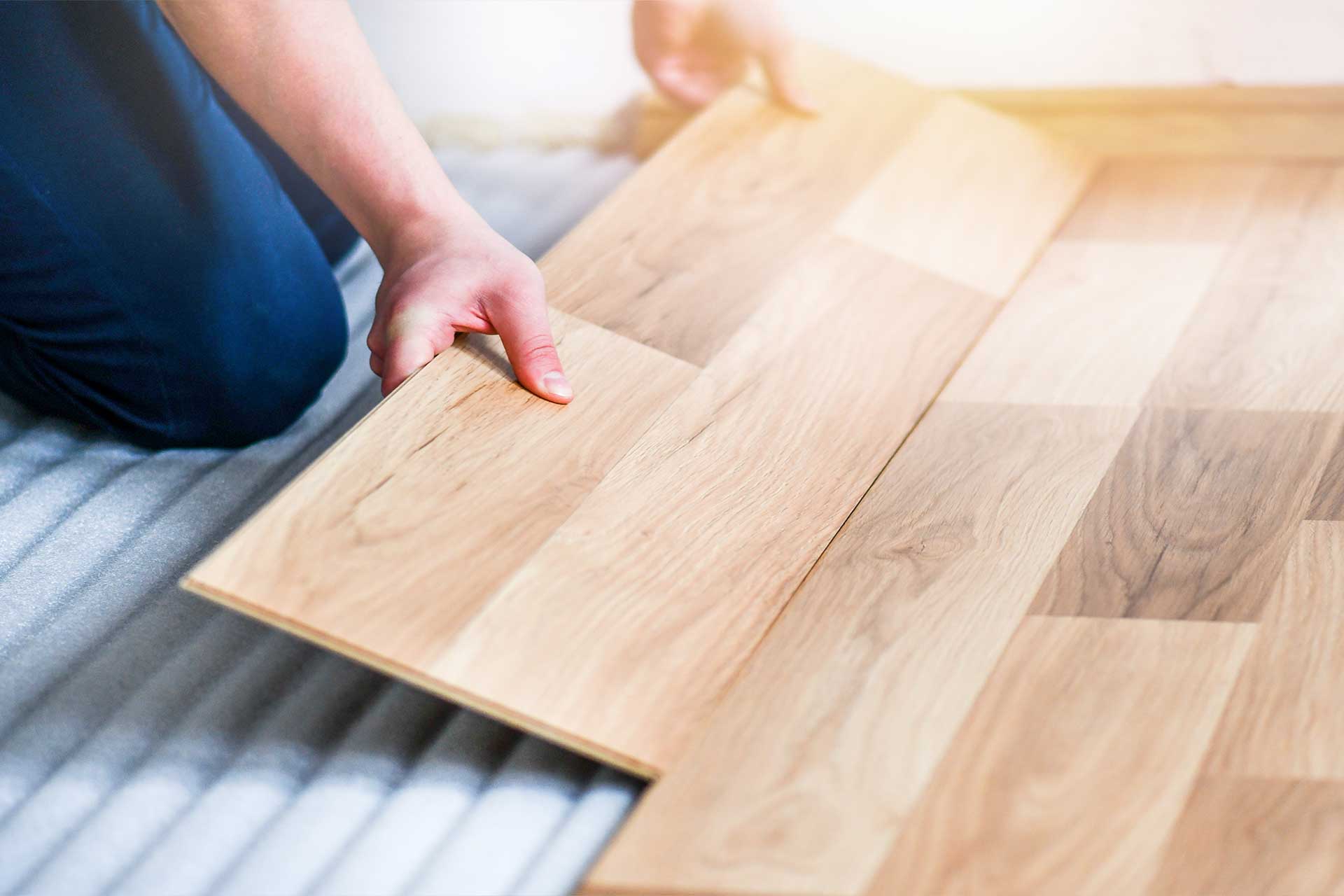Vinyl flooring has come a long way in recent years. What was once seen as a cheap alternative to wood or tile has evolved into a high-performing, environmentally friendly option for all areas of the home. Vinyl flooring offers the look and feel of natural materials, while providing unbeatable durability and low maintenance. As consumers become more eco-conscious, vinyl has emerged as a top choice for sustainable design.
The Evolution of Vinyl Flooring
In the past, vinyl flooring was made using chemicals and materials that were not ideal for indoor air quality. Traditional vinyl contained high levels of volatile organic compounds (VOCs) that could be released as gas over time. This led to poor indoor air quality and health concerns.
Fortunately, vinyl flooring technology has improved dramatically. Today’s vinyl floor is made without ortho-phthalates, heavy metals, or other concerning ingredients. Manufacturers have reformulated vinyl to create a more eco-friendly end product.
Many modern vinyl floors are also now 100% recyclable and contain recycled content. At the end of its lifetime, vinyl flooring can be recycled and repurposed, reducing waste. The development of recycled and recyclable vinyl has played a major role in its emergence as a green building material.
Sustainable Manufacturing Processes
Vinyl flooring’s reputation has also improved thanks to advances in manufacturing. Many leading vinyl flooring brands use processes designed to reduce environmental impact.
For example, luxury vinyl tile maker COREtec minimizes waste by repurposing imperfect planks back into the manufacturing process. Any defects are ground up and reused, eliminating excess scrap.
Manufacturers are also minimizing the energy, water, and resources needed to create vinyl floors. Plant emission controls, closed-loop water systems, solar power, and other sustainability practices make vinyl production more eco-friendly. Companies are working to offset carbon emissions from operations through reforestation projects.
Vinyl Flooring Certifications
Several respected third-party organizations have certification programs for sustainable vinyl flooring. These eco-labels identify products that meet certain environmental, health, and social responsibility criteria.
FloorScore certification means that vinyl flooring meets indoor air quality standards for low VOC emissions. Products with the FloorScore label are regularly tested by accredited labs. This gives consumers confidence that the flooring is safe and clean-air compliant.
NSF certifications also verify environmental claims and sustainability initiatives by vinyl flooring manufacturers. NSF certification audits everything from sourcing and supply chain management to stewardship programs. NSF helps validate the eco-friendly attributes of vinyl flooring.
Long Lifespans and Low Maintenance
In addition to sustainable manufacturing, vinyl floors offer environmental benefits in the installation and use phase. High-performance vinyl floors have long lifespans of 20-30 years or more with proper care. They resist scuffs, scratches, stains, and fading under heavy residential and commercial use.
The durability and resilience of vinyl plank flooring means lower turnover and less frequent replacements. Since vinyl flooring lasts so long, it avoids unnecessary waste and resource use from replacing flooring.
Vinyl’s tough wear layer also makes it ultra low-maintenance compared to alternatives like hardwood or carpet. Little is needed in terms of chemical cleaners, steam mops, or other maintenance. A sweep or damp mop is sufficient for cleaning sealed vinyl floors.
Reduced maintenance inputs like wax, sealers, and professional shampooing also make vinyl flooring greener over its usable lifespan. The easy care vinyl requires cuts back on environmental impacts.
Healthier Indoor Living with Vinyl Floors
In the past, many homeowners hesitated to install vinyl flooring because of indoor air quality concerns. The good news is modern vinyl floors actually improve home indoor air quality in many ways.
Low-VOC vinyl prevents off-gassing issues that can aggravate allergies and asthma. Vinyl is also naturally hypoallergenic and resistant to mold growth. This can reduce allergens, asthma triggers, and illness from biological contaminants.
Unlike carpeting, vinyl won’t trap dust, pollen, pet dander and enable mold growth. Smooth vinyl floors are easier to sweep and mop to remove allergens and germs. Those with chemical sensitivities can benefit from vinyl’s lack of odors and zero off-gassing.
The health, medical, and senior living sectors have been early adopters of green vinyl flooring. Assisted living facilities, hospitals, and medical offices use vinyl for its superior indoor air quality attributes and infection control. As homeowners become more health-conscious, they are following suit.
Stylish and Endlessly Customizable
In the past, vinyl floors got a bad rap for looking cheap or dated. That notion is far outdated today, with vinyl floors that effectively mimic wood, tile, and stone. Brands like Mohawk, Shaw Floors, and Mannington make vinyl planks and tiles that are indistinguishable from the real thing.
Plank flooring with layered film technologies offer remarkable realism. The deep embossing in wood-look planks recreates natural textures. Tile visuals boast sophisticated shapes, designs, and ultra-realistic stone looks.
Vinyl floors are available in unlimited colors, patterns, and visuals. From light and white-washed looks to dramatic dark hues, vinyl offers on-trend aesthetics for any decor. Chic metallics, coastal looks, and abstract patterns are all possible.
Vinyl flooring also wins on customization and versatility. Planks and tiles allow endless mix-and-match designs, borders, accents, and custom layouts. Vinyl is suitable for every room, including kitchens, bathrooms, laundry rooms and basements.
Affordability and Value
For many homeowners, vinyl flooring offers the perfect balance of sustainability and affordability. Durability, low maintenance, and long warranties provide exceptional value over the flooring’s lifetime.
Quality vinyl flooring now offers a great look for 20-40% less than materials like hardwood, tile, or natural stone. Less material is needed for vinyl installation, and it can be DIY-friendly for further cost savings. The range of price points allows eco-options for nearly any budget.
For landlords and property managers, value-minded vinyl flooring generates excellent returns on investment without big upfront costs. In real estate, vinyl flooring can pay for itself over time through lower maintenance and turnover costs. The affordability and performance of vinyl flooring make it a smart choice.
Sustainable Flooring for Future Generations
As we move forward, vinyl flooring manufacturers continue to invest in product innovation and process improvements to increase sustainability. We can expect vinyl floors to have an even more positive environmental footprint moving into the future.
For homeowners, vinyl flooring enables you to create a beautiful, healthy living environment for your family while also being kinder to the planet. Vinyl flooring allows self-expression through style, while reflecting your values around sustainability.
Eco-friendly vinyl floors are a win all around. They offer endless design possibilities with superior durability and easy maintenance. By choosing vinyl flooring, you invest in the health of your indoor spaces as well as the earth for future generations. Vinyl flooring gives flooring a fresh, sustainably-minded perspective for modern lifestyles.
Vinyl Flooring in Kitchens and Bathrooms
Kitchens and bathrooms are two of the most important areas of the home to consider eco-friendly and sustainable flooring options. As busy, wet areas prone to spills, messes, and heavy traffic, kitchens and bathrooms need flooring that is durable and water-resistant. Vinyl plank flooring provides the perfect solution.
With impermeable surfaces and waterproof cores, high-performance vinyl stands up to wet environments. Planks resist damage from spills, leaks, cleaning, and humidity. Properly sealed vinyl won’t swell or warp when exposed to water. This is a must for kitchen and bath areas.
Vinyl flooring is a hygienic, easy-to-clean choice for kitchens and bathrooms. The nonporous floors won’t trap bacteria, mold, or mildew like carpet or grouted tile. Germs have nowhere to hide on solid vinyl floors. Just a quick mopping keeps vinyl floors fresh and bacteria-free.
Vinyl floors are safer underfoot when wet, reducing slip-fall risks. The floors maintain traction even when damp. For families with kids or aging adults, this gives peace of mind.
From a design perspective, waterproof vinyl opens up many more options for kitchens, baths, and laundry rooms. Home chefs can opt for stunning wood-look planks that would be impractical with real hardwood. Bold patterns and stone looks bring decorative flair, without the higher cost and maintenance of ceramic or stone tile.
Vinyl Flooring for Basements
damp, chilly basements often get left out of home remodeling projects. Homeowners assume carpet or hardwood would be ruined by basement moisture and flooding. Vinyl plank floors provide a perfect basement flooring solution with waterproof durability.
100% waterproof vinyl flooring creates a dry, comfortable, and stylish basement space. Modern building techniques prevent major flooding, but vinyl provides peace of mind by resisting small leaks or high humidity.
Today’s vinyl plank flooring looks so realistic, most guests will never guess your basement has vinyl floors. Mix and match wood-look, tile, and stone visuals to create your dream basement oasis. Vinyl flooring holds up to entertaining, kids play spaces, home gyms, workshops, and laundry rooms.
Compared to cold basement concrete, vinyl floors offer insulation and sound absorption properties. Plush vinyl plank underfoot makes basements warmer and quieter. This transforms dreary basements into beloved living spaces.
Waterproof luxury vinyl plank flooring helps basements reach their full potential as valuable home square footage. Instead of leaving basements unfinished, vinyl flooring enables you to completely utilize this space.
Vinyl Flooring for Rental Properties and Real Estate
Landlords, property managers, and real estate investors are tapping into vinyl flooring for rental properties. For durability, cost savings, and attractive resale value, vinyl can’t be beat.
Vinyl flooring withstands the high traffic, wear-and-tear, and tenants that comes with rental living. Property managers favor vinyl’s life cycle cost savings compared to replacing carpet and other flooring.
Luxury vinyl plank flooring gives rental properties a competitive edge over homes with dated carpet or tile. Modern wood-look vinyl planks offer on-trend style preferred by prospective tenants. Curb appeal matters, and vinyl delivers.
Maintenance costs remain low throughout a vinyl floor’s long service life. No waxing, refinishing, or professional cleaning is required. Rental units with vinyl flooring stay market-ready with minimal upkeep.
Between occupants, landlords can simply sweep and mop vinyl floors to prepare for new tenants. There’s no need to hire carpet cleaning services, refinishers, or installers between leases. Easy maintenance keeps rental operating costs in check.
As a bonus, vinyl flooring improves indoor air quality in rentals. This reduces tenant complaints and turnover. For the reasons above, vinyl flooring provides higher rental income and satisfaction across the board.
Vinyl Flooring for Active Families
Let’s face it, kids, pets, entertaining, and busy lives can take a toll on flooring. Active families need durable, worry-free flooring that can withstand their lifestyle. Luxury vinyl flooring has the performance and resilience needed for busy families on the go.
Spills, pet accidents, tracked-in dirt, and high traffic are no match for waterproof vinyl floors. Parents appreciate how easy vinyl floors are to clean after messy meals, arts and crafts, and more. Mud, snow, rain, and all kinds of kid and pet mishaps clean up in a snap.
Having small children or pets means accepting some scratches and scrapes on floors. High-wear vinyl floors better hide fine scratches and scuffs compared to materials like hardwood. Though durable, some wear and tear is inevitable with extremely active living.
Overall vinyl withstands the chaos much better than most flooring options in family homes.
Vinyl flooring also absorbs noise associated with busy families. Pitter-patter of little feet stays quieter to avoid disrupting parents or neighbors. Vinyl also absorbs impact noise from running, jumping, and toys hitting the floor. This improves quality of life and reduces noise complaints in condos and apartments.
To sum up, vinyl flooring creates family-friendly living spaces. The worry-free durability enables you to enjoy living and making memories, without constantly fretting over your floors.
Vinyl Flooring for Allergies and Asthma Sufferers
Allergies and asthma are the bane of many homeowners’ existence. From seasonal allergies to pet dander, dust, and mold spore allergies, indoor allergens make life challenging for the sensitive. Asthma attack triggers lurk in flooring and indoor air. How can you create an allergy-friendly home? Vinyl flooring provides a compelling solution.
Unlike carpeting, vinyl floors don’t trap dust and allergens. Smooth, solid vinyl prevents allergens from embedding deep like carpet. Just a quick pass with the vacuum or mop removes dust and dander from vinyl flooring. Thorough vacuuming becomes less critical.
With no fibers or cracks to harbor allergens and moisture, vinyl resists mold growth. Dry, mold-free vinyl floors remove one key asthma and allergy trigger. Bathrooms, basements, and kitchens stay mold-free.
Low-VOC vinyl also improves indoor air quality. Without chemical off-gassing, vinyl floors create cleaner, healthier air. Better indoor air reduces allergy and asthma problems year-round.
For allergy and asthma sufferers, easy-clean vinyl floors provide a literal breath of fresh air. The reduction in allergens, asthma triggers, and irritants allows families to live healthier, more comfortably.
Vinyl Flooring Installation Tips
Installing vinyl flooring is easier than ever thanks to modern plank floors with click-lock technology. Homeowners can tackle vinyl plank installation as a DIY project and save on labor costs. Here are a few tips for successful vinyl floor installation:
- Invest time in proper subfloor prep and moisture testing. Address any unevenness, cracks, or moisture issues before installing vinyl. Smooth, dry subfloors prevent problems down the road.
- Plan a layout for your planks with a mix of random lengths. Stagger the end joints at least 6 inches apart for best stability and appearance.
- For easier installation, remove base moldings to allow planks to slip under. Replace moldings to cover flooring expansion gaps after installing planks.
- Always follow manufacturer’s instructions for installing vinyl floors. Requirements like subfloor prep, acclimation times, expansion gaps, and moisture barriers vary.
- Use spacers against walls during installation to maintain proper expansion space. Remove spacers after installing the final row of planks.
- In areas like bathrooms, use 100% silicone caulk between the vinyl floor perimeter and walls, tub/shower surrounds. This prevents moisture intrusion underneath.
- After installation, immediately wipe away any adhesive residue from the floor’s surface using mineral spirits on a soft cloth. This prevents finish damage.
- Allow freshly installed vinyl floors to remain undisturbed for 24 hours to set properly. Avoid dragging furniture or walking heavily during this time.
With some basic DIY skills and attention to detail, you can have beautiful new vinyl floors in a weekend. Hiring a professional installer is recommended for more complex vinyl floor projects.
Vinyl Plank Flooring Pros and Cons
Vinyl plank flooring offers many benefits that make it a top choice for residential and commercial spaces. But how does it stack up against potential drawbacks? Here is an overview of the pros and cons.
Pros:
- Durable and scratch/stain-resistant surface
- 100% waterproof for bathrooms, kitchens, basements
- Easy DIY installation with click-lock planks
- Hypoallergenic and improves indoor air quality
- Easy to clean and maintain
- Budget-friendly price point
- Long warranties of 15-30 years
- Stylish wood, tile, and stone looks
- Insulating and sound-dampening
- Sustainable manufacturing and recyclable
Cons:
- Can fade, discolor from excessive sunlight over time
- Not compatible with radiant floor heating systems
- Prone to indentation from sharp objects or heavy furniture
- Needs replacement eventually unlike stone or hardwood
- Limited very high-gloss options compared to tile
- Can be noisy as subfloor moves or flexes
Overall, vinyl plank flooring provides excellent durability, performance, affordability, and style for today’s homeowners. With proper installation and care, luxury vinyl floors make an exceptional choice within any budget.


